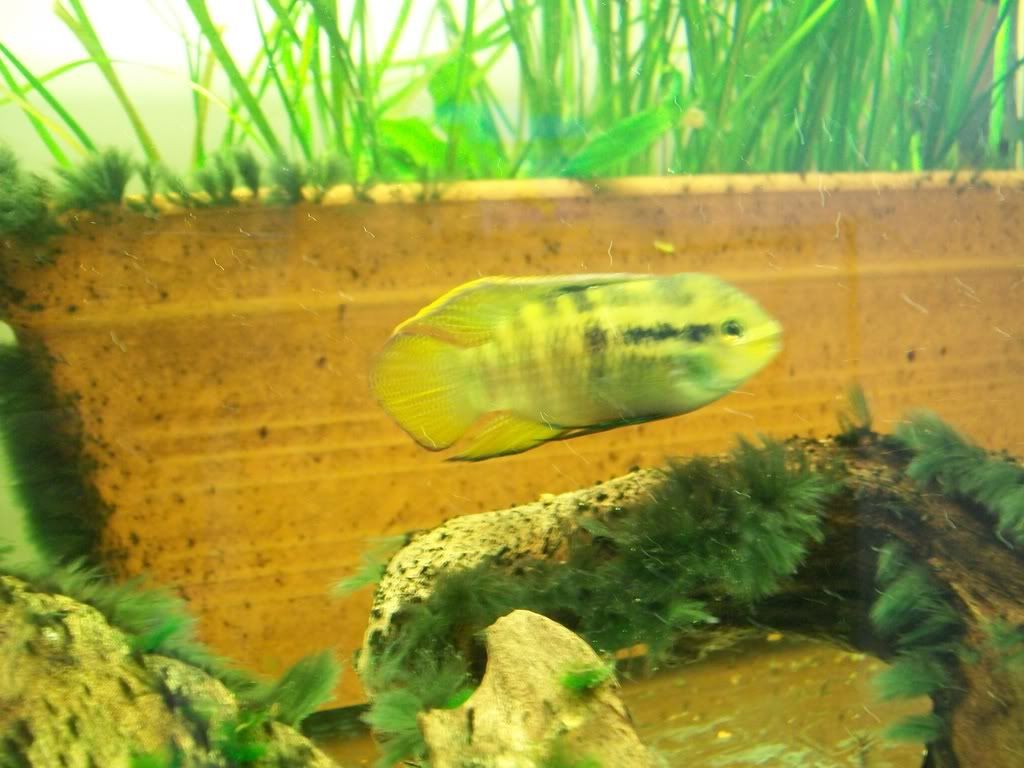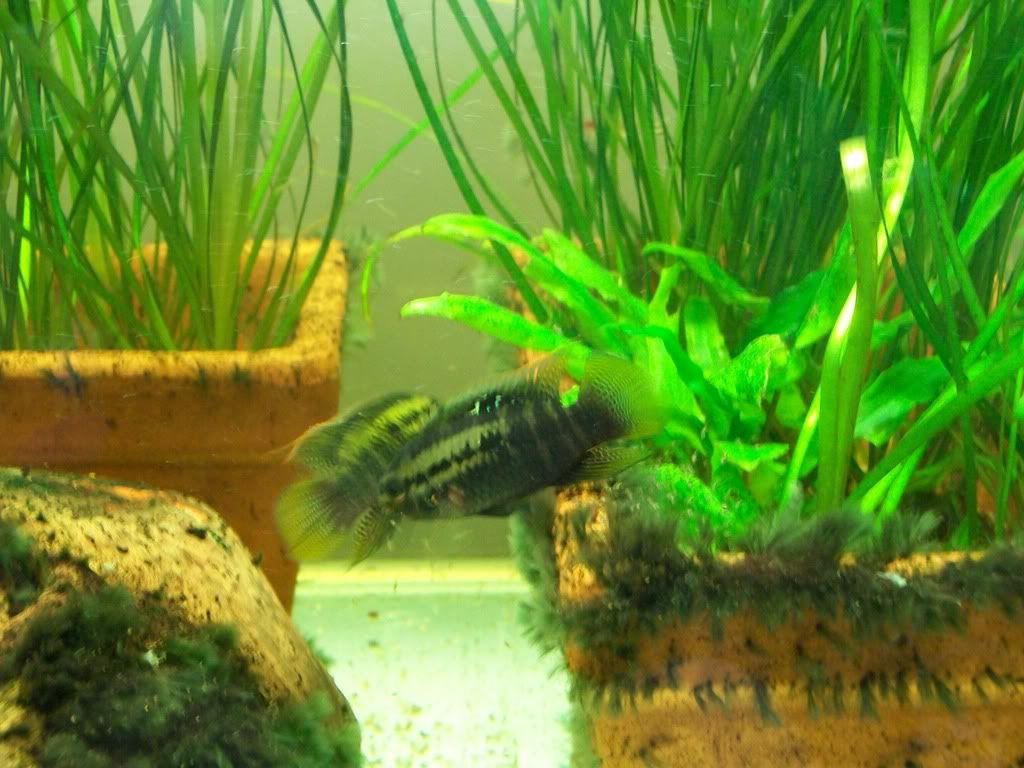In September, I did a 7-day Maracyn 1/2 treatment of a pair of Laetacara dorsigera for what I believed to be mild popeye. I used a bunch of live plants to control the ammonia levels, as well as an AC 30 filter in the 10 gallon hospital tank for water circulation.
After 5 days of treatment, the female (could be a smaller male, not sure) lost most of the vibrant colors she had and was rather dull. She has been in the 20 gallon planted tank with the rest of the fish with no apparent health issues for a little over a month now. She eats normally and isn't losing weight.
The fish are fed twice a day, with a staple of NLS Thera A pellets and Nutrafin Spirulina flakes, both of which contain garlic. They are fed 3 times a week with frozen brine shrimp and bloodworms. pH is about 6.6, 25% water changes done weekly, ammonia/nitrite 0.
Here's a video showing the dull colors on the female. Click for video
Does anyone know what could be wrong with her if anything and the reason behind what seems to be permanent color loss? What can I do to help her regain the colors?
After 5 days of treatment, the female (could be a smaller male, not sure) lost most of the vibrant colors she had and was rather dull. She has been in the 20 gallon planted tank with the rest of the fish with no apparent health issues for a little over a month now. She eats normally and isn't losing weight.
The fish are fed twice a day, with a staple of NLS Thera A pellets and Nutrafin Spirulina flakes, both of which contain garlic. They are fed 3 times a week with frozen brine shrimp and bloodworms. pH is about 6.6, 25% water changes done weekly, ammonia/nitrite 0.
Here's a video showing the dull colors on the female. Click for video
Does anyone know what could be wrong with her if anything and the reason behind what seems to be permanent color loss? What can I do to help her regain the colors?



